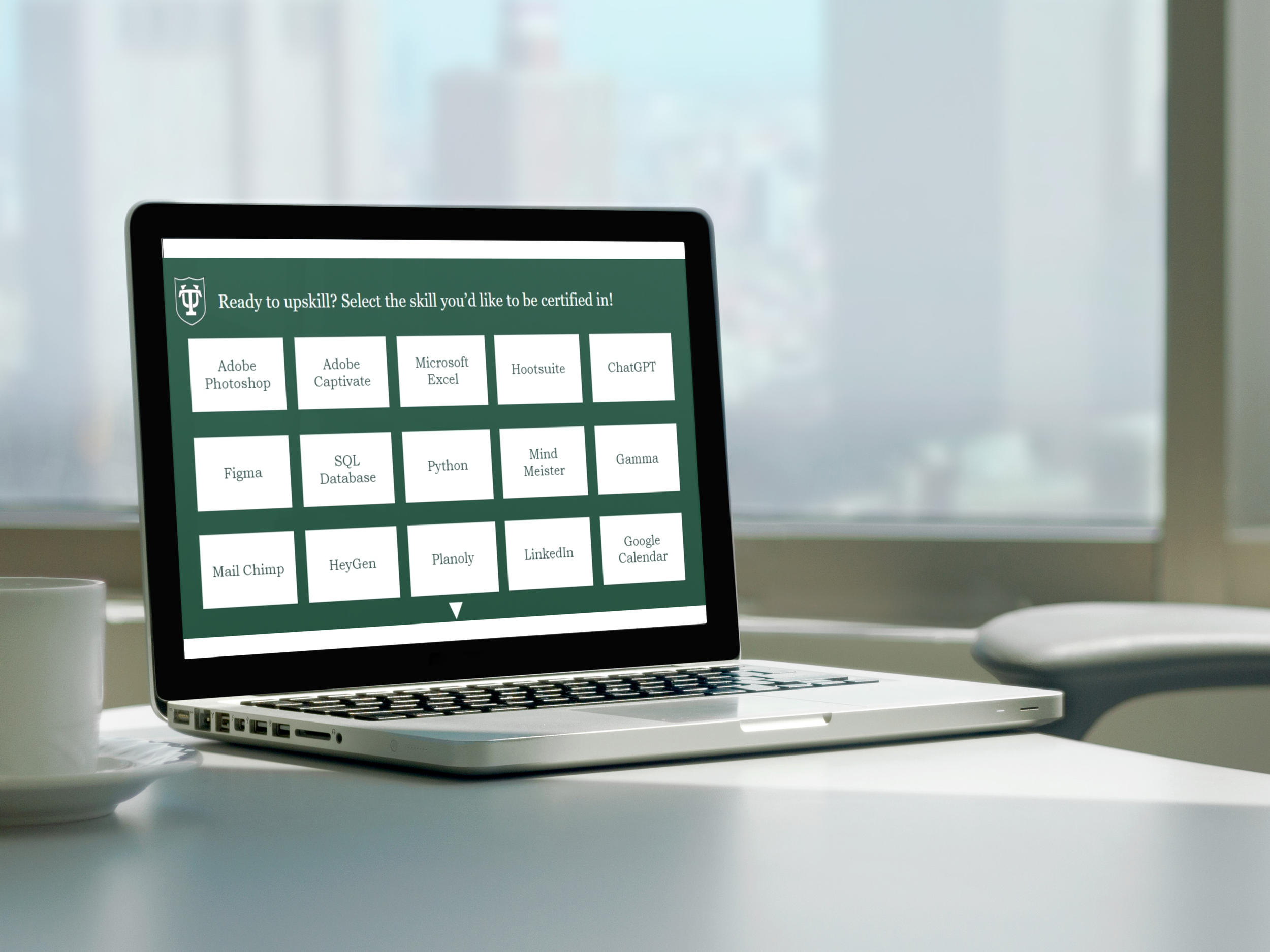Turning Feedback
Into Effective Actions
A scenario-based eLearning designed to help dental sales representatives translate feedback into S.M.A.R.T. actions that produce on-the-job results.
Responsibilities: instructional design (SME meetings, action mapping, storyboarding), eLearning development (high and low-fidelity mockups, visual design, prototype, full build)
Tools used: Articulate Storyline, Articulate Storyline 360, Photoshop, Adobe Illustrator, Figma, Gitmind, HeyGen, Google Docs, Freepik.
The New World: AI to Increase Productivity
The goal: Learners will learn how to apply 12 different AI resources to support research and analysis that leads to a presentation creation as well as organizational strategies in order to increase work efficiency by 50% in two weeks.
The problem: Learners across ages and roles (students and professionals) are not versed in AI resources that provide supplemental aid for work and school responsibilities.
The solution: A third-person, scenario-based eLearning experience where learners access 12 different AI resources centralized around assistance with research, analysis, presentation creation, and organizational strategies and methods. The learner moves through Bloom’s Taxonomy by first focusing on understanding and then moving into application and analysis of the AI resources to ensure the learner can first understand and then apply the skills to their real-life professional responsibilities.
Why eLearning?: The eLearning experience is ideal due to the high number of resources and areas of learning needed for the learners, which would require multiple in-person training conferences that would be restrictive to schedules and locations. The eLearning experience also provides learner control, so the experience is tailored to each individual’s needs and challenges. The budget-oriented eLearning scenario saves the organization over $20,00 since there is no cost (in-person training, flights, conference, accommodations) for the 10,000+ remote workers to receive the training.
The portion you see: This is the introduction and micro-learning tab interaction that provides the first level of the learner’s stage of Bloom’s Taxonomy (understanding).
From Course to Certification: Reskilling and Upskilling
The problem: Businesses and organizations found that interns and new hires often lacked essential soft and hard skills required to thrive in their roles. While companies were eager to onboard employees ready to contribute, there was a gap in the skills and competencies new hires brought, which affected productivity and success. These gaps spaned critical areas like communication, problem-solving, project management, and technical know-how. All were essential to the employee’s success.
The solution: To address this challenge, I developed a tailored eLearning experience designed to upskill or reskill employees, guiding them through targeted career development and ultimately leading to certifications. Using Articulate Storyline, I created scenario-based, real-world interactive modules that aligned with industry-specific skills requirements, enabling learners to practice and refine key competencies. Through an end-to-end process rooted in the ADDIE model, I ensured that each module delivered measurable results that aligned with business goals and learner needs.
Why eLearning? After deconstructing the budget and needs, the eLearning approach embodied the goals of reaching a broad audience, making training accessible anytime and anywhere, while remaining cost-effective, and providing learner control and accessibility. The versatility of online learning means content can be continuously updated to match industry shifts, and learners can move at their own pace, enhancing retention. As with my other eLearning solutions. these are crafted to be user-friendly, visually engaging, and highly adaptive, with Articulate Storyline enabling interactive simulations and real-world scenarios that bring learning to life.
The portion you see: This preview provides a look at the introduction and the user interface. The prototype will exhibit the navigational process as well as exhibit the certification and LMS communication.



